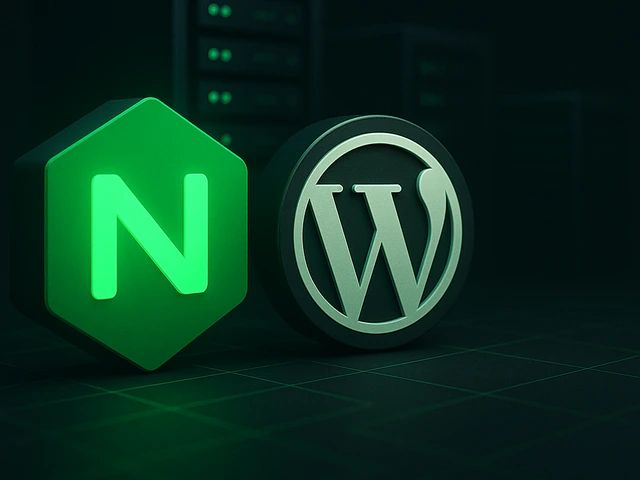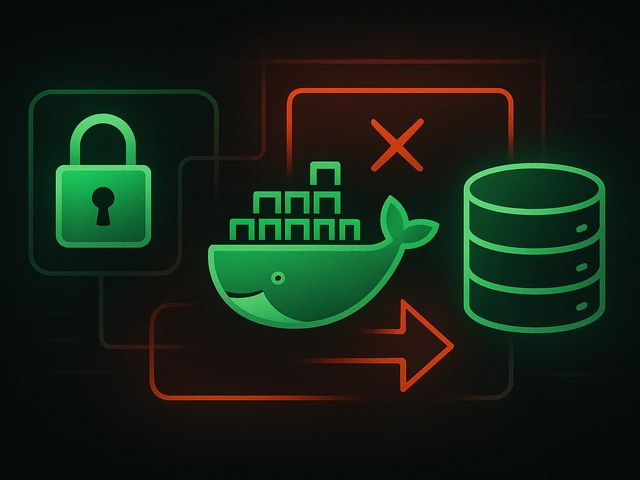
You will find the complete technical guide to building your own Discord bot from scratch here. This in-depth article will thoroughly guide you through every ste...
3v-Hosting Blog
8 min read
There’s a stubborn misconception in the tech world that WordPress is bloated, slow, and outdated. You’ll hear developers dismiss it with a shrug and entrepreneurs complain about sluggish sites. But the truth is less dramatic: WordPress isn’t slow - it’s just often poorly hosted and lazily configured. Put it on a fast VPS, give it a bit of care, and it turns into a performance beast.
If your site feels like it’s dragging, the issue is rarely with WordPress itself. The real culprits are usually things like default server setups, bad themes, overstuffed plugins, and forgotten background processes. On shared hosting, you have limited tools to fight back. But with a VPS - whether managed or not - you have full control over the stack. That means you can fine-tune every layer, from the operating system to the database and caching, until your site loads like it's powered by caffeine.
This article is for those who want to unlock the real power of WordPress when it runs on a Virtual Private Server. No fluff, no magic buttons - just technical insight and practical examples, grounded in real-world experience.
Moving from shared hosting to a VPS is like switching from a bicycle to a motorcycle. You get speed, power, and freedom - but also the responsibility of knowing how to handle it. VPS gives you dedicated resources, root access, and the ability to configure your server exactly how your project needs.
When choosing a server OS, lightweight and stable distributions like Ubuntu 22.04 or AlmaLinux 9 are a great starting point. They’re widely supported and play nicely with most hosting panels or command-line workflows. If you’re comfortable on the terminal, you can skip the panels entirely and build your environment from the ground up. That’s where the real magic begins.
Choosing the right web server is also crucial. Apache is still the default in many tutorials, but Nginx has long overtaken it in terms of performance, especially under load. It’s event-driven, efficient, and perfectly suited for modern VPS environments. For those who need .htaccess support but want speed, OpenLiteSpeed is an interesting middle ground.
You don’t need a top-tier machine to see results. Even a modest VPS with two CPU cores and 4 GB RAM can host a well-optimized WordPress site that handles thousands of visits per day, if the stack is tuned properly. And that tuning starts at the core.
One of the easiest ways to speed up your site is to make sure you’re using the latest PHP version. Many developers still run PHP 7.4 out of habit, unaware that PHP 8.2 brings serious performance improvements - in some cases, nearly 20–30% better execution times and lower memory usage. On a busy e-commerce site, that difference can mean the difference between smooth navigation and checkout failures during peak traffic.
Database tuning is another area where VPS owners can gain massive performance wins. Out of the box, MySQL or MariaDB aren’t configured for your WordPress workload - they’re set up for general usage. That’s like buying a racing bike and never adjusting the seat or handlebars. A few tweaks to buffer sizes, query cache, and connection limits can dramatically reduce CPU load and page generation time.
PostgreSQL is also gaining ground among advanced users. It requires more configuration up front but offers excellent performance, especially for complex data-driven WordPress projects. If you’re building a multilingual site with heavy taxonomy or a large number of users, PostgreSQL might be worth exploring.
Without caching, WordPress behaves like a chef that insists on cooking every dish from scratch, even when the customer orders the same meal twenty times a day. It queries the database, renders the page, loads every plugin - all over again. That’s incredibly inefficient.
Page caching solves this by serving static versions of your pages to visitors. It’s like pre-cooking meals during lunch rush. Server-level caching solutions like FastCGI (via Nginx) or LiteSpeed Cache (when using OpenLiteSpeed) handle this at blazing speed, completely bypassing the PHP layer for most requests. This is where VPS really shines - shared hosting usually doesn’t let you configure such things.
For more dynamic sites, especially those using WooCommerce or membership plugins, object caching becomes essential. Redis and Memcached are the two most popular options. They store transient data in memory rather than in the database, making your site feel instantly more responsive under load. Combined with PHP’s OPcache, which stores precompiled code in memory, you create a responsive, intelligent caching system that anticipates what your site needs before it asks.
Even the fastest VPS in the world can’t fix poor content hygiene. One of the most common performance killers is oversized images. You’d be shocked how often sites serve 4 MB PNGs as header banners. On mobile, that’s a disaster. Optimizing images for web, converting them to WebP, and enabling lazy loading should be a basic hygiene practice for every WordPress admin.
But beyond images, most WordPress sites also suffer from JavaScript and CSS overload. Themes and plugins often load every asset on every page, regardless of need. This is where front-end optimization meets back-end tuning. By analyzing which scripts and styles are actually used on each page, and removing the rest, you reduce load times dramatically. On VPS, this can be scripted or automated server-side, or managed via WordPress plugins with fine-grained control. The goal is to make sure your pages load only what they need - no more, no less.
In one case, we worked with a client whose blog had solid content but loaded fifteen external fonts and six different JavaScript libraries on every post. After trimming unused assets and deferring non-critical scripts, the site dropped from 3.9s to under 1s on GTmetrix, without changing a single line of content.
A fast VPS is powerful, but it doesn’t need to do everything. Offloading static assets like images and scripts to a CDN takes pressure off your origin server. Cloudflare is often the first step - and even its free tier gives you global caching, basic DDoS protection, and SSL termination. For more demanding projects, providers like BunnyCDN offer faster propagation and detailed control over cache behavior.
At the same time, don’t neglect security. A hacked or blacklisted WordPress site is the slowest kind of site - or worse, it might go down entirely. VPS gives you the ability to install firewalls like UFW or CSF, monitor logins with fail2ban, and configure automatic updates for the OS and packages. On the WordPress side, make sure to disable XML-RPC if unused, limit login attempts, and regularly clean up unused themes and plugins.
Finally, think about automation. Set up cron jobs to optimize the database, clear expired transients, and back up your content. Treat your WordPress site like a living application - not a static set-it-and-forget-it installation.
WordPress has the reputation of being simple to install - and it is. But truly optimizing it on a VPS requires technical curiosity, some experimentation, and a little sysadmin spirit. The result, however, is a platform that feels nothing like “just another blog engine.” It becomes a performance-tuned CMS, capable of competing with much more complex frameworks, all while retaining its legendary usability and plugin ecosystem.
In a world where seconds matter, your users will thank you for the faster load times, smoother experience, and snappier interface. And Google will reward you too - Core Web Vitals, page experience, and crawling efficiency all benefit from solid server-side optimization.
So yes, WordPress can be slow - but only if you let it. On a well-configured VPS, with thoughtful tuning and a bit of technical care, it can easily become one of the fastest and most flexible CMS solutions on the internet.

Learn how IP addresses work: IPv4 vs IPv6, public and private IPs, DNS resolution, routing, security basics, and how IPs are used in real server and cloud infra...

Accelerating WordPress at the Nginx level: correct PHP-FPM settings, try_files, static files, caching, Brotli, wp-login protection, and secure headers for stabl...

Effective backup strategies for Docker applications: how to protect volumes, data, and configurations while avoiding common mistakes, and quickly restore servic...